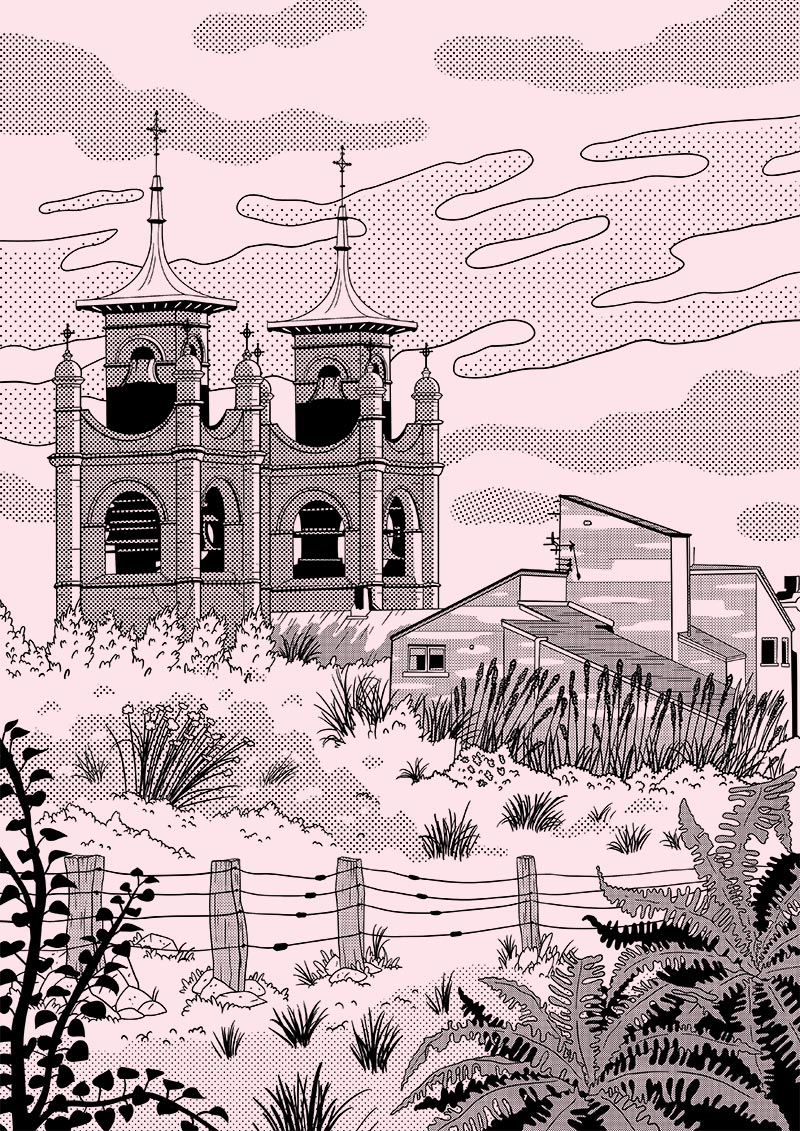
Everyday Architecture
St Mary’s RC Church
St Mary’s RC Church, also known as Our Lady of Victories, is the church with two grand gold topped bell towers near the Hilltown. Designed by architect George Matthewson in the Byzantine-Romanesque style which is known for having thick walls, round arches, large towers and a symmetrical design. Built from rubble and ashlar (large, square stones) with a slate roof, the church was a bold addition to the area when it opened in 1851.
In 1901, the striking twin art nouveau bell towers, and a narthex (entrance area), were added to celebrate 50 years since the church opened. They were designed by Thomas M. Cappon and built by William G. Lamond in the Art Nouveau style, which as you can tell from the gold turrets, is a very decorative style, often involving lots of curves and some Japanese influences.
Built on a very steep site on Forebank Road, the church was originally associated with three primary schools, an ‘Infant School’ (primary 1 and 2), a boys’ school to the South of the building and a girls’ school to the West. The schools are now demolished, but the church is still proudly standing, just a few more decades until it’s 200 years old!
Just below the golden tower tops, you can see slats in the towers. These are church bell louvres. Louvres are a set of downward facing slats fitted to bell towers. They stop water getting in when it rains, increasing the lifespan of the bell support and all of its mechanical equipment. Also known as abat-son (in French this literally means drop-sound), they must not muffle the sound, letting through as much as possible, to make sure that absolutely everybody nearby can hear the bells ringing to tell the time or to let everyone know when mass is, or to spread news about events such as funerals or weddings. Very handy, unless you fancy a lie in!
Research by Stephanie Crowe
Words by Poppy Jarratt
Illustration by Dana Ulama